Abstract
Williams, M. K., King, E., and Walford, Joan (1969).Brit. J. industr. Med.,26, 202-216. An investigation of lead absorption in an electric accumulator factory with the use of personal samplers. Thirty-nine lead workers and controls, in stable conditions of exposure, each wore personal lead-in-air samplers daily for two weeks. During the second week samples for blood lead, urinary lead, urinary coproporphyrin, urinary δ-aminolevulinic acid (ALA), the punctate basophil count, and haemoglobin were taken daily. Duplicate estimations were made on one day.
The lead exposures of men doing almost identical jobs differed by ratios of up to four to one. This could be attributed only to personal differences in working habits.
The correlation coefficients and regression equations of the biochemical tests with lead-in-air and with each other were determined. The mean values and 95% confidence limits of single determinations of some of the biochemical tests corresponding to the two commonly accepted TLVs of lead-in-air (0·20 and 0·15 mg./m.3) were calculated from the regression equations.
For each biochemical test the variation due to analytical error, the variation from day to day within subjects and the residual variation due to analytical error, and the residual variation about the regression on lead-in-air were calculated. Previous estimates of the latter are not known. Excessive confidence may be placed in an index of exposure due to its low coefficient of variation within subjects unless the coefficient of variation between subjects about regression is taken into account.
This correction for specific gravity of estimations of lead and ALA in spot samples of urine was found to reduce slightly the residual variation between subjects about the regression on lead-in-air and to increase the correlations with lead-in-air and with the other biochemical tests, but these changes were not statistically significant.
The modified method used for estimating blood lead and urinary lead is described and validated.
Full text
PDF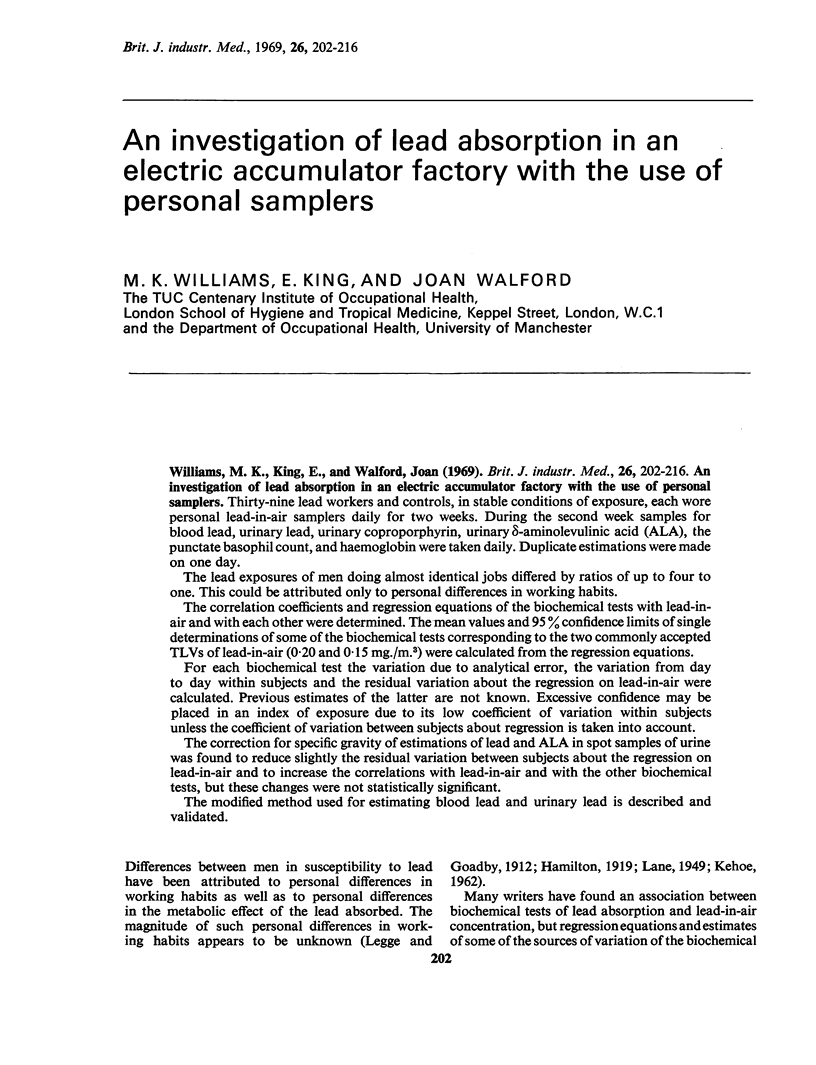
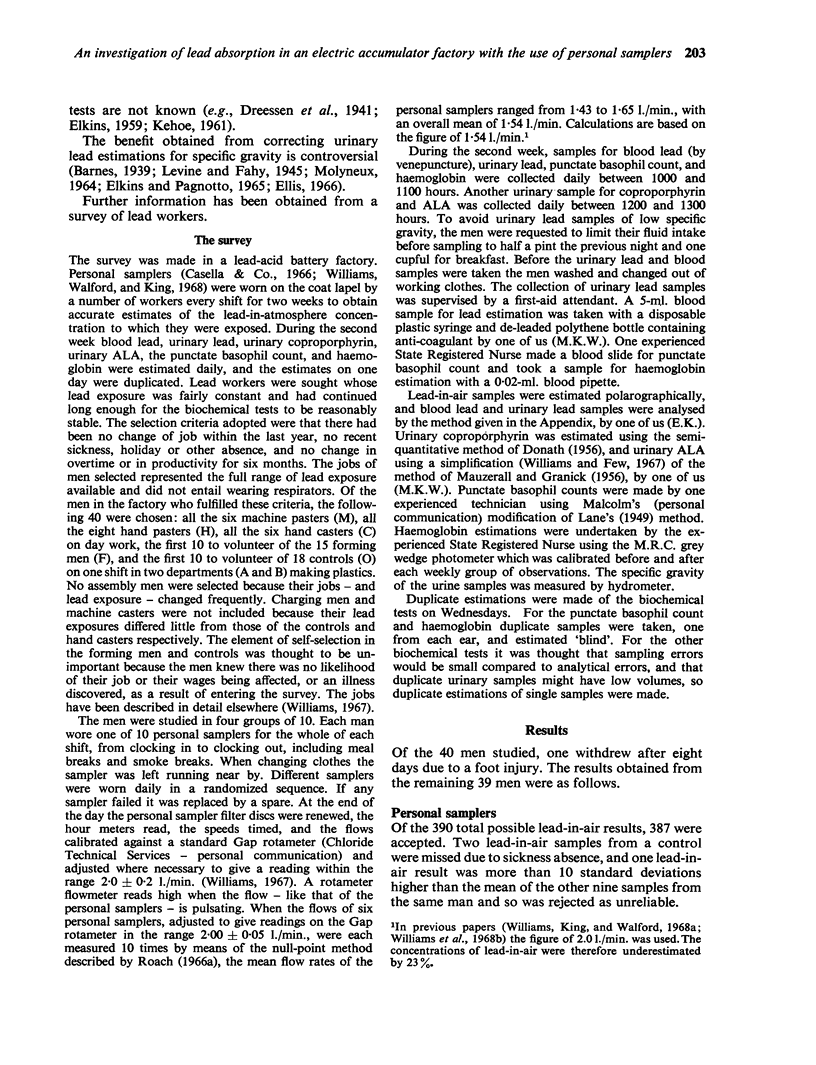
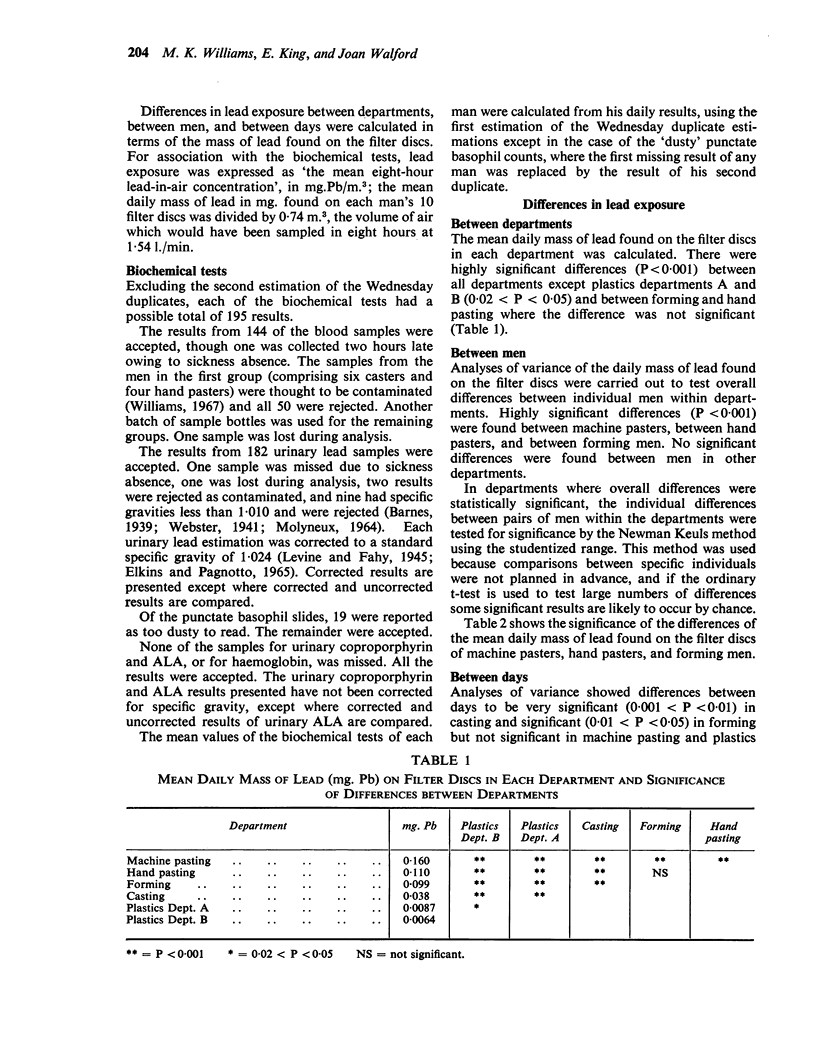
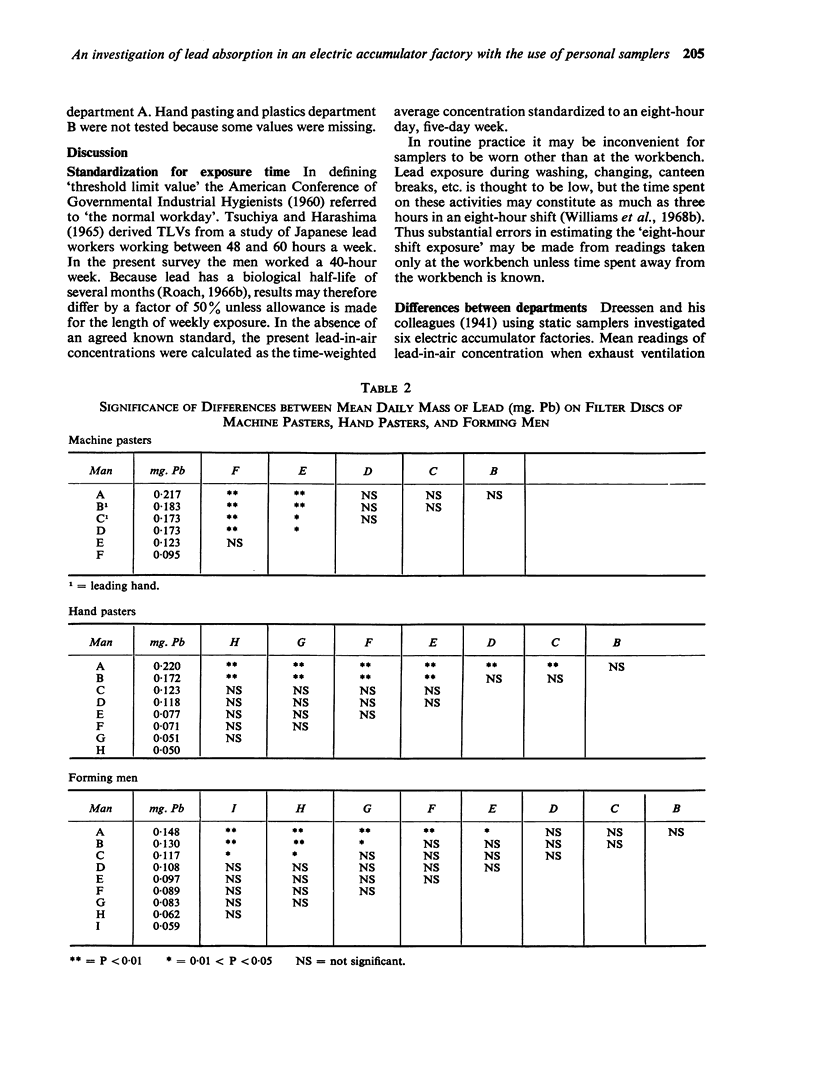
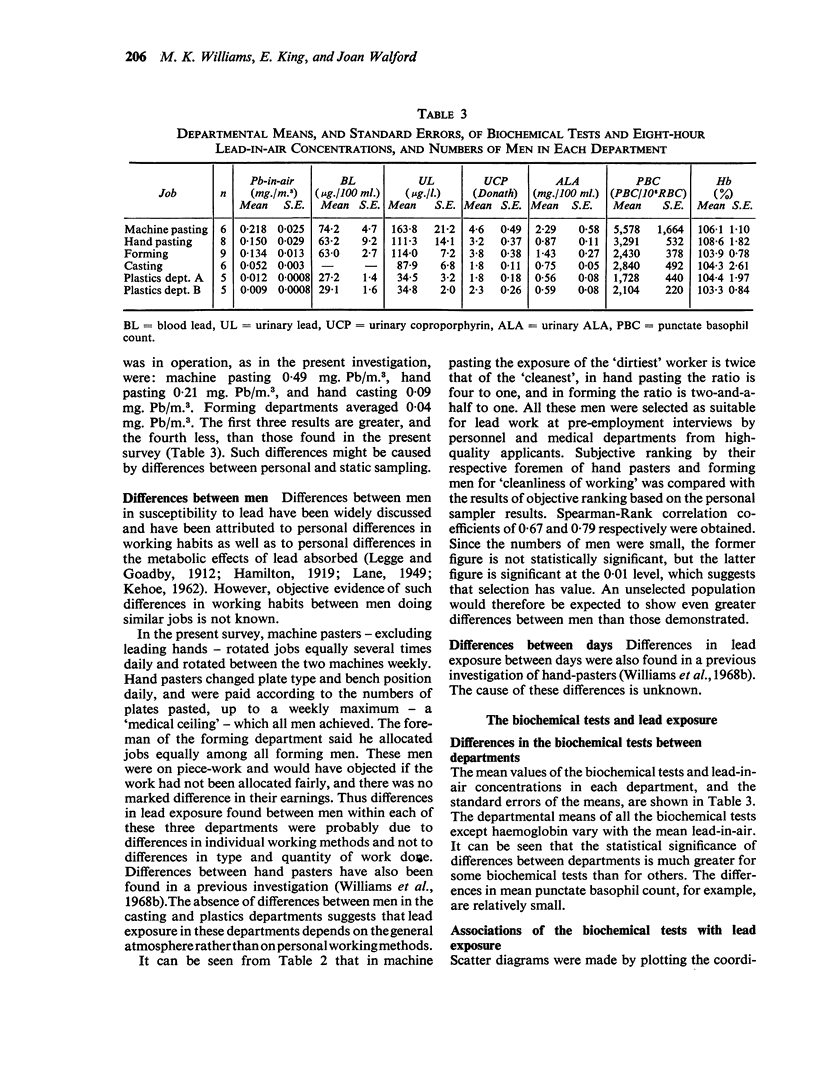
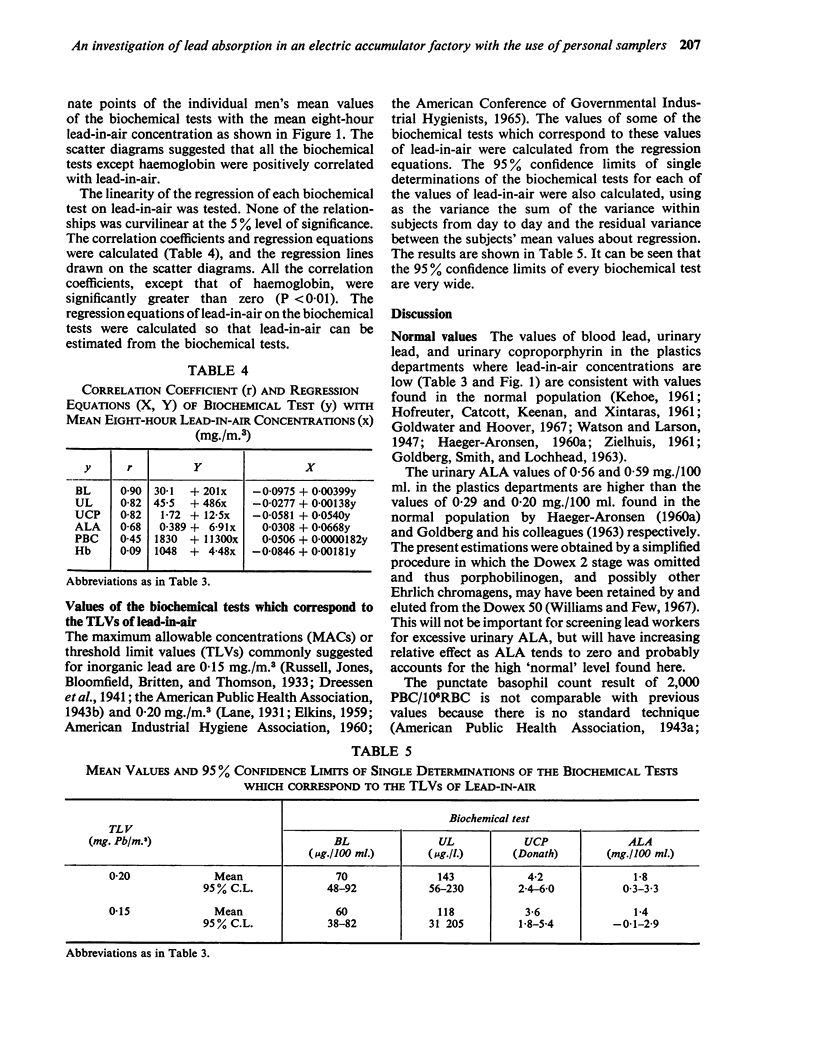
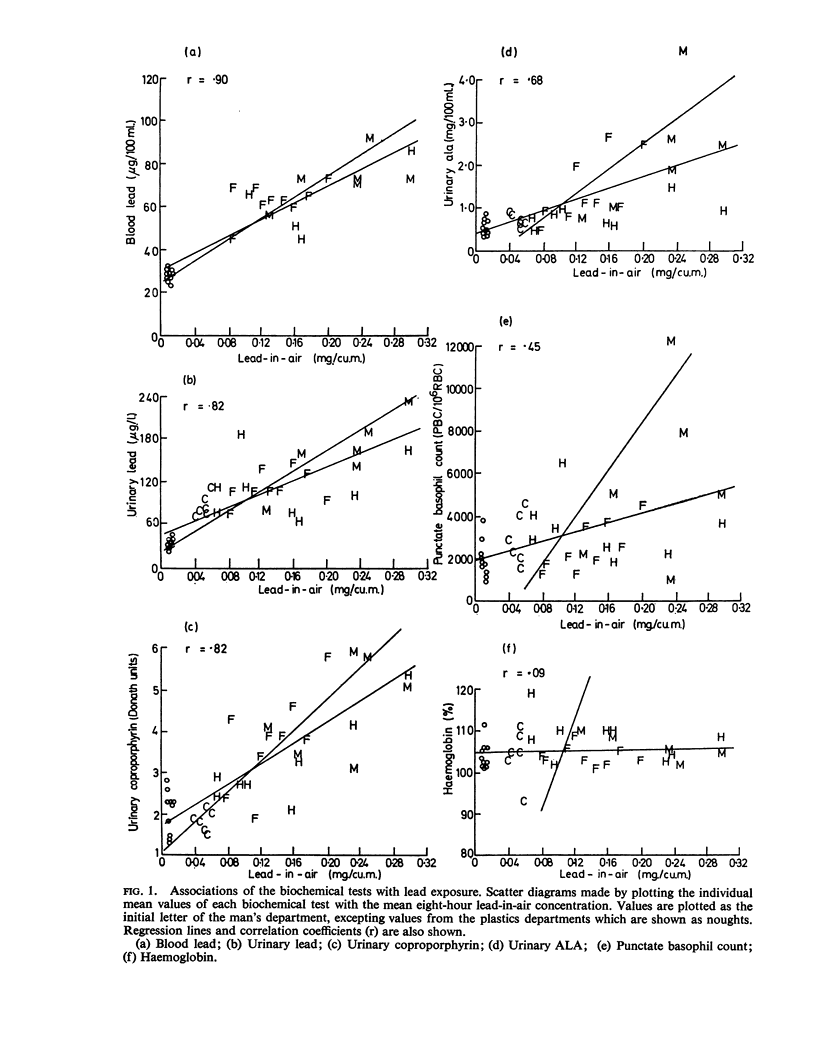
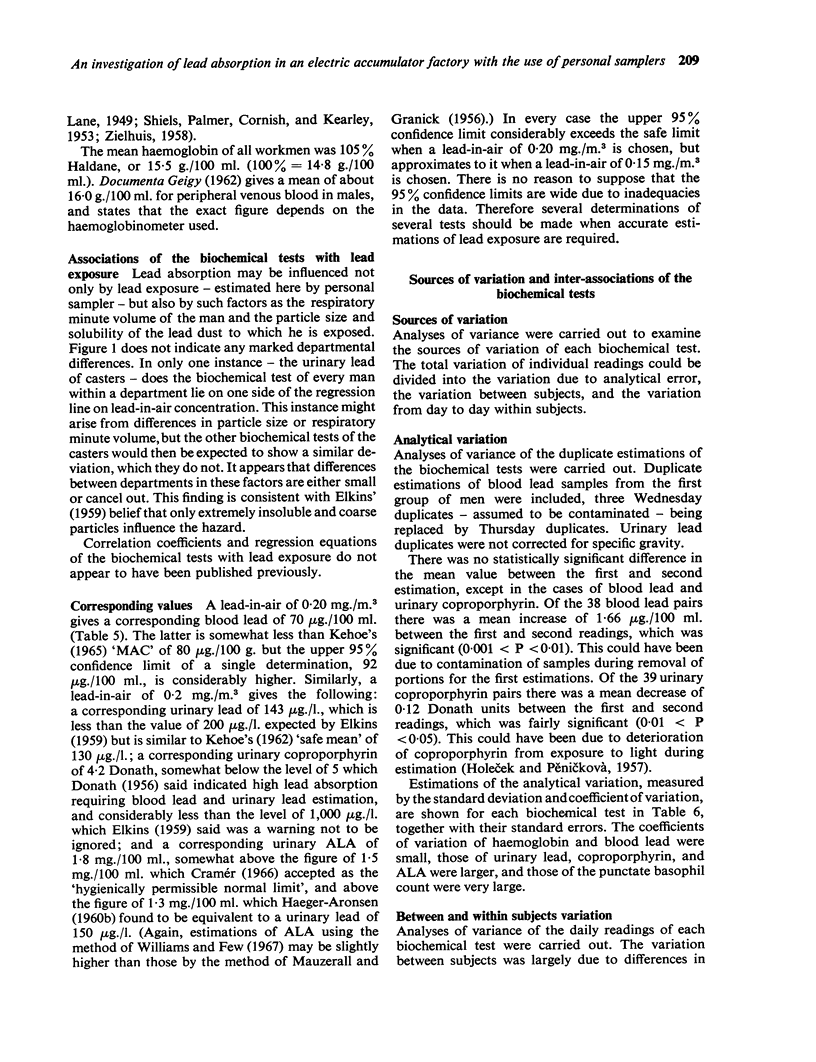
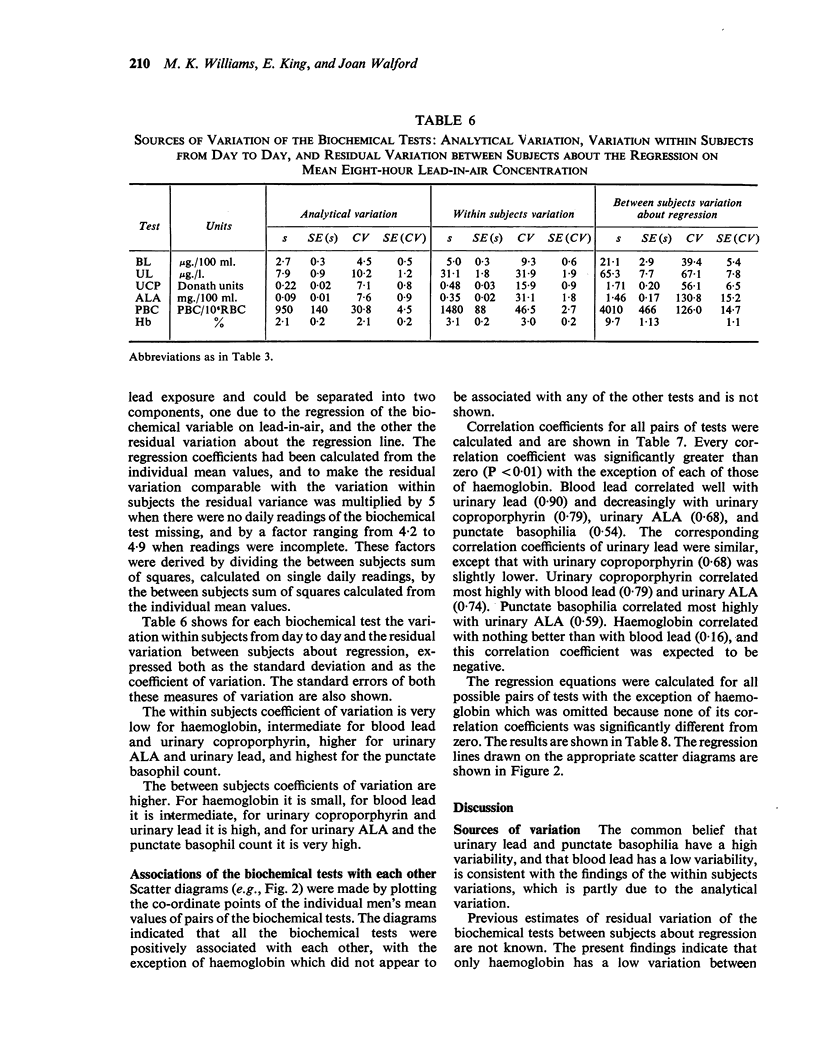
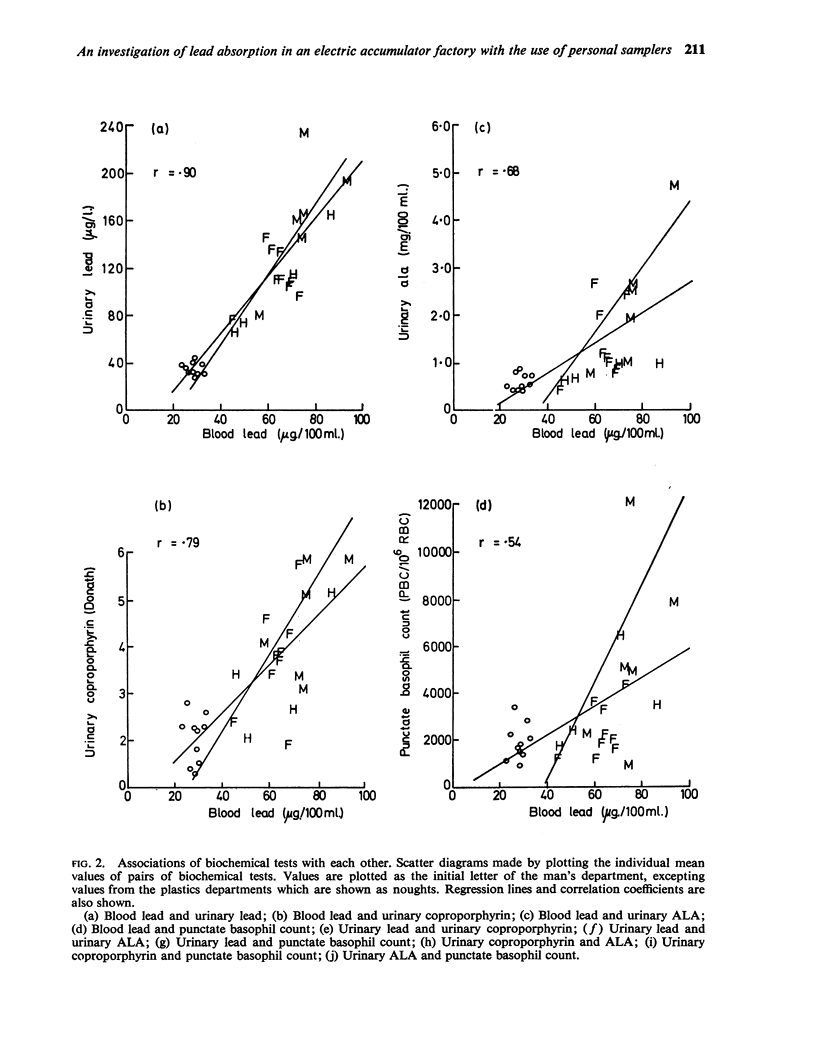
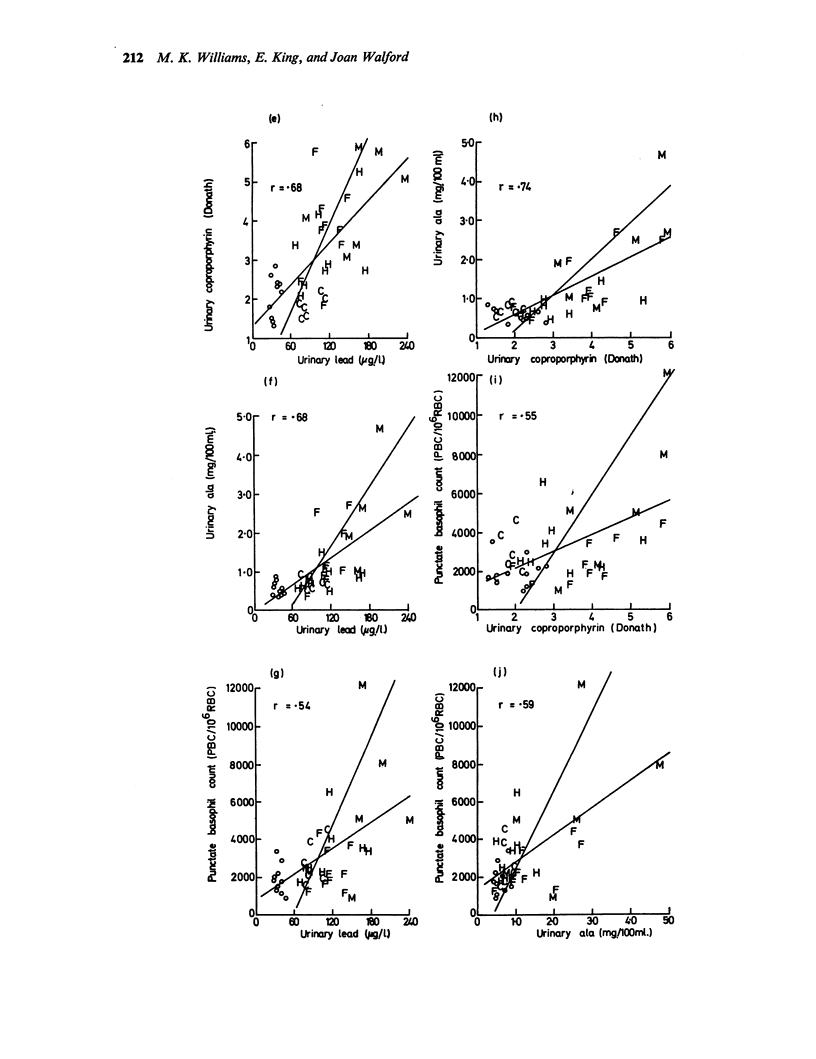
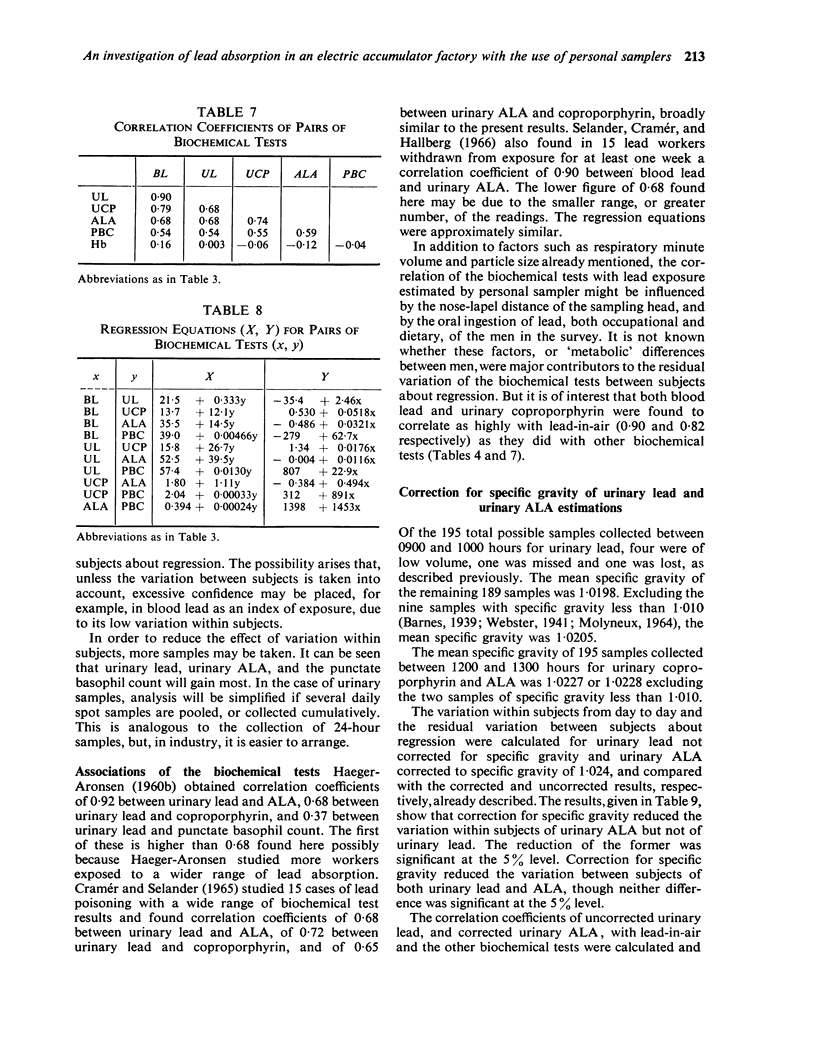
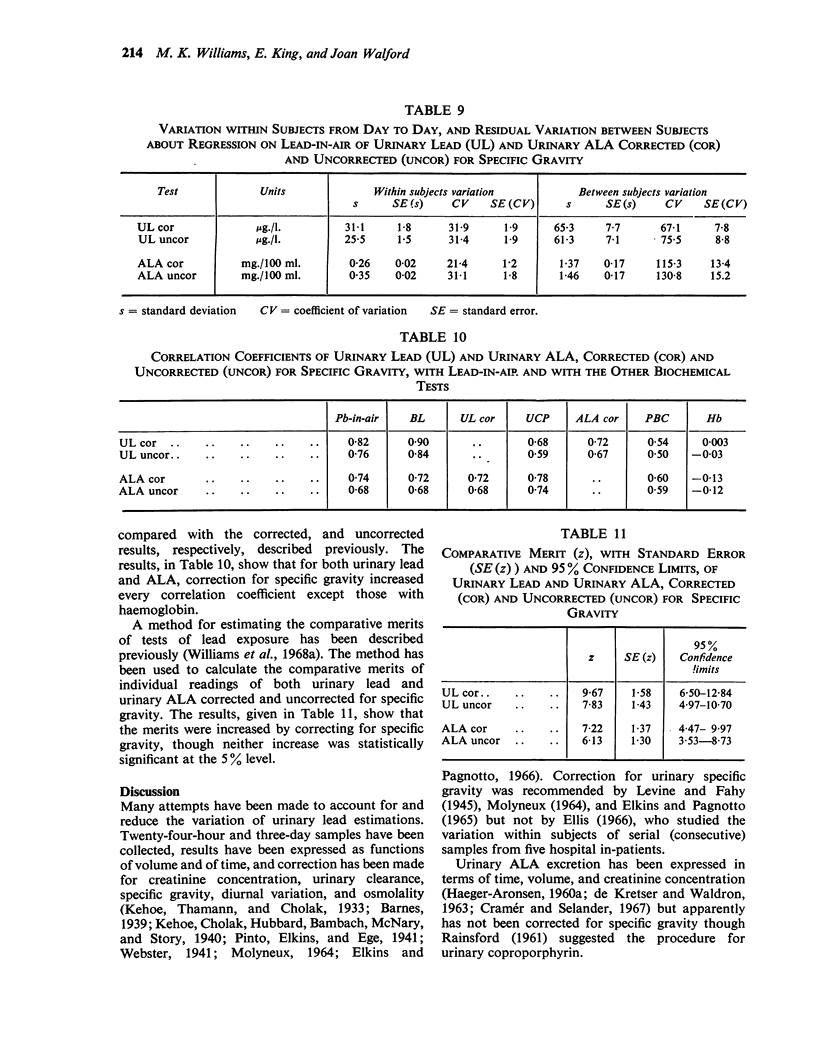
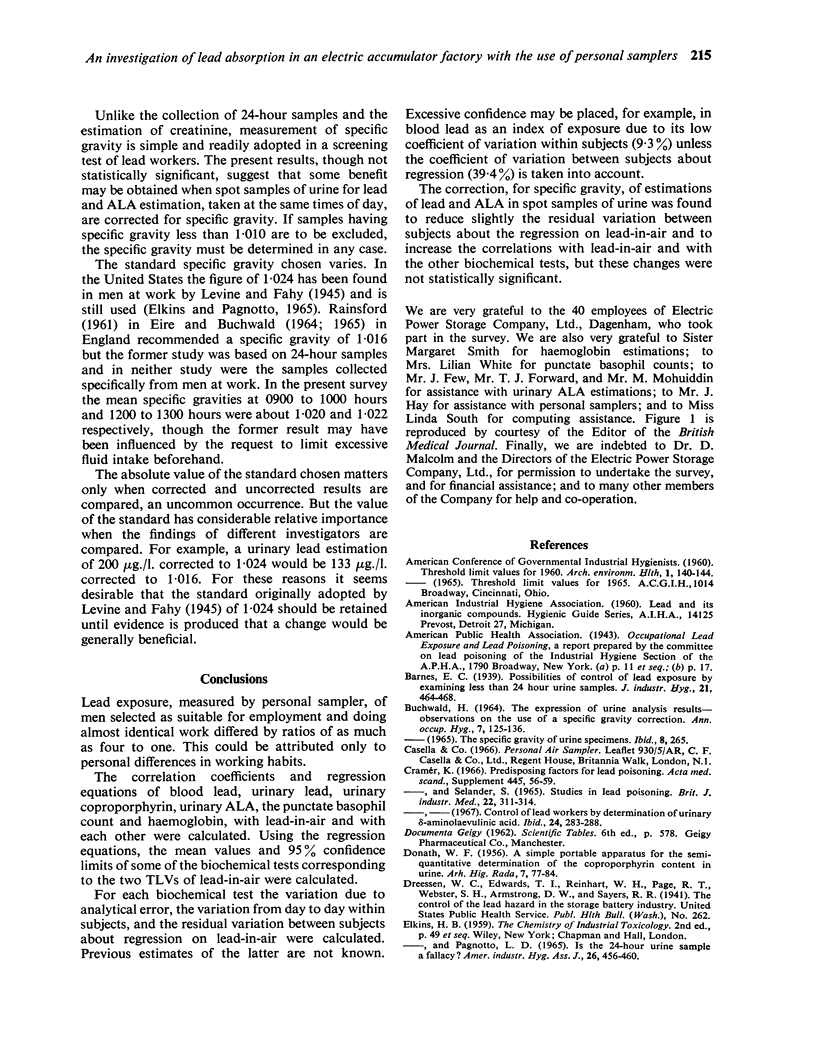
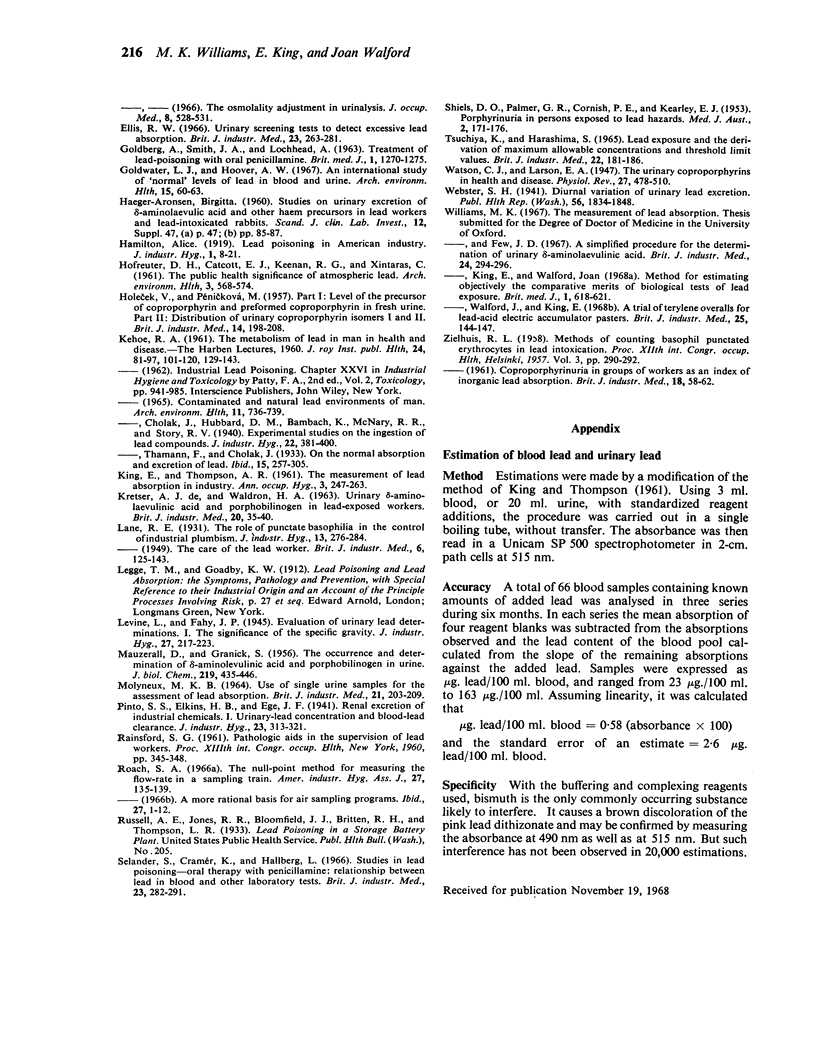
Selected References
These references are in PubMed. This may not be the complete list of references from this article.
- BUCHWALD H. THE EXPRESSION OF URINE ANALYSIS RESULTS--OBSERVATIONS ON THE USE OF A SPECIFIC GRAVITY CORRECTION. Ann Occup Hyg. 1964 Jun;7:125–136. doi: 10.1093/annhyg/7.2.125. [DOI] [PubMed] [Google Scholar]
- Cramér K. Predisposing factors for lead poisoning. Acta Med Scand Suppl. 1966;445:56–59. doi: 10.1111/j.0954-6820.1966.tb02339.x. [DOI] [PubMed] [Google Scholar]
- Cramér K., Selander S. Studies in lead poisoning. Comparison between different laboratory tests. Br J Ind Med. 1965 Oct;22(4):311–314. doi: 10.1136/oem.22.4.311. [DOI] [PMC free article] [PubMed] [Google Scholar]
- DE KRETSER A. J., WALDRON H. A. Urinary delta aminolaevulinic acid and porphobilinogen in lead-exposed workers. Br J Ind Med. 1963 Jan;20:35–40. doi: 10.1136/oem.20.1.35. [DOI] [PMC free article] [PubMed] [Google Scholar]
- Ellis R. W. Urinary screening tests to detect excessive lead absorption. Br J Ind Med. 1966 Oct;23(4):263–281. doi: 10.1136/oem.23.4.263. [DOI] [PMC free article] [PubMed] [Google Scholar]
- GOLDBERG A., SMITH J. A., LOCHHEAD A. C. Treatment of lead-poisoning with oral penicillamine. Br Med J. 1963 May 11;1(5340):1270–1275. doi: 10.1136/bmj.1.5340.1270. [DOI] [PMC free article] [PubMed] [Google Scholar]
- Goldwater L. J., Hoover A. W. An international study of "normal" levels of lead in blood and urine. Arch Environ Health. 1967 Jul;15(1):60–63. doi: 10.1080/00039896.1967.10664874. [DOI] [PubMed] [Google Scholar]
- HOFREUTER D. H., CATCOTT E. J., KEENAN R. G., XINTARAS C. The public health significance of atmospheric lead. Arch Environ Health. 1961 Nov;3:568–574. doi: 10.1080/00039896.1961.10663074. [DOI] [PubMed] [Google Scholar]
- HOLECEK V. Excretion of urinary coproporphyrin in lead poisoning. I & II. Br J Ind Med. 1957 Jul;14(3):198–208. [PMC free article] [PubMed] [Google Scholar]
- KEHOE R. A. The metabolism of lead in man in health and disease. I. The normal metabolism of lead. J R Inst Public Health. 1961 Apr;24:81–97. [PubMed] [Google Scholar]
- KING E., THOMPSON A. R. The measurement of lead absorption in industry. Ann Occup Hyg. 1961 Jun;3:247–263. [PubMed] [Google Scholar]
- MAUZERALL D., GRANICK S. The occurrence and determination of delta-amino-levulinic acid and porphobilinogen in urine. J Biol Chem. 1956 Mar;219(1):435–446. [PubMed] [Google Scholar]
- MOLYNEUX M. K. USE OF SINGLE URINE SAMPLES FOR THE ASSESSMENT OF LEAD ABSORPTION. Br J Ind Med. 1964 Jul;21:203–209. doi: 10.1136/oem.21.3.203. [DOI] [PMC free article] [PubMed] [Google Scholar]
- Roach S. A. The null-point method for measuring the flow rate in a sampling train. Am Ind Hyg Assoc J. 1966 Mar-Apr;27(2):135–139. doi: 10.1080/00028896609342805. [DOI] [PubMed] [Google Scholar]
- SHIELS D. O., PALMER G. R., CORNISH P. E., KEARLEY E. J. Porphyrinuria in persons exposed to lead hazards. Med J Aust. 1953 Aug 1;2(5):171–176. doi: 10.5694/j.1326-5377.1953.tb95703.x. [DOI] [PubMed] [Google Scholar]
- Selander S., Cramér K., Hallberg L. Studies in lead poisoning. Oral therapy with penicillamine: relationship between lead in blood and other laboratory tests. Br J Ind Med. 1966 Oct;23(4):282–291. doi: 10.1136/oem.23.4.282. [DOI] [PMC free article] [PubMed] [Google Scholar]
- Williams M. K., Few J. D. A simplified procedure for the determination of urinary delta-aminolaevulinic acid. Br J Ind Med. 1967 Oct;24(4):294–296. doi: 10.1136/oem.24.4.294. [DOI] [PMC free article] [PubMed] [Google Scholar]
- Williams M. K., King E., Walford J. Method for estimating objectively the comparative merits of biological tests of lead exposure. Br Med J. 1968 Mar 9;1(5592):618–621. doi: 10.1136/bmj.1.5592.618. [DOI] [PMC free article] [PubMed] [Google Scholar]
- Williams M. K., Walford J., King E. A trial of Terylene overalls for lead-acid electric accumulator pasters. Br J Ind Med. 1968 Apr;25(2):144–147. doi: 10.1136/oem.25.2.144. [DOI] [PMC free article] [PubMed] [Google Scholar]


